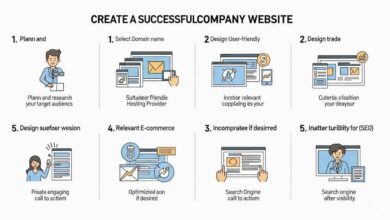SaaS Business Assessment: Step-by-Step Guide
For long-term success in Software as a Service (SaaS), understanding its health is of utmost importance. From monitoring revenue growth to customer satisfaction levels, various key considerations need to be addressed when assessing SaaS company health; one tool that may assist is using a SaaS company valuation calculator; this article will walk through these processes step by step.
Understanding Key Metrics
Sustainable growth and profitability require understanding key metrics. These will provide invaluable insight into the financial health and the performance of the SaaS company you founded; Monthly Recurring Revenue (MRR) stands out as an indispensable indicator for monitoring subscription income generated each month, helping accurately forecast cash flows as well as making educated decisions regarding resource allocation strategies and investments.
Customer Acquisition Cost (CAC) is another key measure to assess the efficiency of marketing and sales activities, providing insight into customer acquisition costs across channels while optimizing spending to increase returns. Churn Rate Monitoring indicates customer retention; tracking it allows you to spot trends or patterns requiring improvement while developing strategies to lower it and enhance CLTV (Customer Lifetime Value).
Analyzing Financial Statements
Reviewing your SaaS business’s financial statements is an integral component of understanding its overall health and performance. Your income statement, balance sheet, and cash flow statement offer invaluable information regarding revenue, expenses, assets, and liabilities for analysis; by closely studying these metrics you can gain an in-depth view into its profitability, liquidity, and solvency – for instance, your income statement allows you to evaluate revenue-generating activities as well as identify areas for cost optimization.
Balance sheets provide an overview of your company’s financial standing at any one point in time, detailing your assets, liabilities, and shareholders’ equity. By analyzing it you can assess financial stability as well as leverage ratios relating to short and long-term obligations of your business. Finally, cash flow statements track the inflow and outflow of cash generated during operations, investments, or financing activities giving insight into whether it can generate funds to sustain its operations and fund its ongoing needs.
Evaluating Customer Retention Rates
Retention rates are essential components of SaaS business success since high churn rates indicate potential flaws with your product or service and pose threats to long-term growth and profitability. By tracking retention rate data closely, you gain invaluable insights into customer satisfaction and loyalty; analyze trends to allow for improvement, identify areas for enhancement, and implement measures designed to provide an unforgettable customer experience.
Finding Growth Opportunities
Assessing the health of your SaaS business extends far beyond simply reviewing current performance; it encompasses also investigating future growth prospects. This process includes discovering avenues for expansion, innovation, and differentiation within your market space – such as geographical expansion or product diversification opportunities as well as refined marketing/sales strategies – to identify new growth possibilities that require market analyses or competitive research for proactive strategic approaches that identify growth.
Understanding market trends, customer needs, competitor strengths and weaknesses as well as your company opportunities is crucial to unlocking its true potential and positioning your SaaS business for success. Fostering innovation and agility allows companies to respond more swiftly and capitalize on emerging trends – giving your SaaS firm an advantage amid ever-evolving challenges.
Leveraging Data Analytics
Data analytics plays an integral part in evaluating and improving the health of a SaaS business. Through customer data collection, user behavior tracking, market trends analysis, and decision making aided by various tools/ platforms available today that assist businesses to collect, organize, visualize, and interpret this valuable resource – driving growth and innovation of any size!
Utilizing the SaaS Company Valuation Calculator
Now let’s move on to using the SaaS Company Valuation Calculator. This tool was specifically created to assist founders of SaaS companies in understanding the true worth of their businesses by evaluating important metrics like revenue, growth rate, and customer acquisition costs. By employing this calculator you can benchmark against industry norms as well as pinpoint areas for improvement within your operation.
Conclusion
Assessing the health of your SaaS business is crucial to its long-term success, from tracking key metrics and reviewing financial statements, recognizing opportunities for expansion and customer retention rates analysis, using tools like the SaaS company valuation calculator or simply gathering insights about its performance as a means of driving growth and profits forward.





